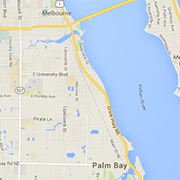A Parent's Perspective: Kindness Molds Young Souls

The kindness seed was planted early and continues to grow in my three sons. August, who is now 7 and in second grade, was in Mrs. (Barbara) Wilcox’s transitional kindergarten (TK) class at Tropical Elementary on Merritt Island that developed the kindness symbol.
Denver, now 6 and in first grade, and Shoal, now 5, were ready to show their kindness alongside their brother. This year, Shoal was lucky enough to be in Mrs. Wilcox’s class, reigniting the passion.
Since August and his class first started the kindness symbol, it has helped facilitate significant growth in all three of my kids. They are always looking for ways to be kind. Almost every weekday this summer, we participated in handing out food to the homeless. Now when they see someone on the side of the road, they ask to give them food. We keep extra snacks in our car just for this.
From the kids participating in beach clean-ups to social justice movements, they have learned that kindness involves action and they constantly seek out actions to be kind and positively impact the community.
At home, kindness is a daily activity, and the kids’ awareness around kindness has been instrumental in redirecting behaviors, proactively seeking out prosocial behaviors and giving specific direction and purpose to our actions. We ask questions regularly like, “How can we be kind to the Earth? To other people? To our family?”
While the kids may not know this, being immersed in the kindness symbol has also allowed me as a parent to find ways to encourage kindness that I may not have otherwise thought of. As a licensed clinical social worker, I cannot help but think about the psychological perspective. The kindness symbol provided a framework for decreasing shame, increasing empathy, and increasing resiliency. We started to look at behaviors as separate from who a person is.
For example, if someone does something that is not kind, it may have been a poor choice but does not make them a bad person. As a parent, I can ask, “Was that behavior kind?” And from there, we can look at how to change behaviors while still feeling good about who we are as a person. This is extremely important for kids as they are egocentric beings. As kids interact in the world, they often blame themselves for whatever happens.
As my kids experience major family and worldly events, being immersed in the kindness symbol gives them the understanding that even though things happen that they don’t like, they can still choose to be kind and do kind things.
In 2018, Barbara Wilcox and her class of 6-year-old transitional kindergartners set out to create a national symbol for kindness, believing that seeing the symbol would remind people: See Kindness, Be Kindness.
Read our previous story from August, 2019.
Amber Hartnett Joyce LCSW-QS is the owner of True You Brevard providing counseling services throughout the state of Florida and Wisconsin. She is also the founder of the Non Profit Adel’s Hope, in honor of her sister who recently died from an overdose, which will bring much needed counseling and peer support services for individuals struggling with substance use as well as their families. Amber is also a full time mother of three brilliant and compassionate children.
Read more articles in our digital magazine.








